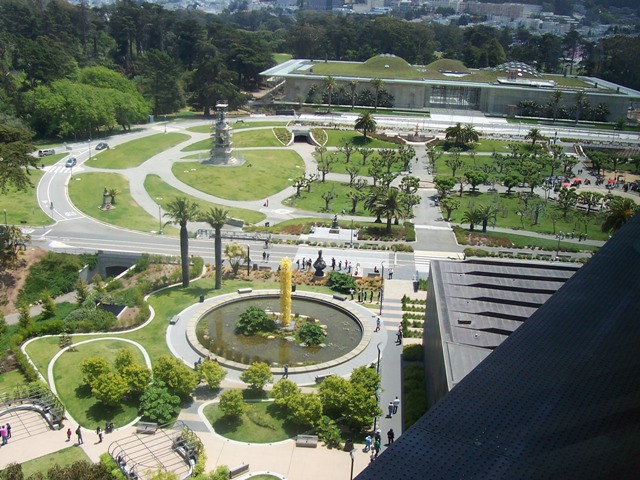by Rafael
Future HSR feeder services cut back, raise fares
The San Francisco Chronicle reports today that Caltrain will raise fares and cut service:
The board took no action on the $99.4 million budget plan Thursday - that will come later this month or early next month - but voted unanimously to declare a fiscal emergency. That move allows the transit agency to bypass state environmental reviews and enact service cuts and fare hikes at an accelerated pace.The decision follows similar ones by BART, SF Muni and AC Transit in the East Bay. Squeezed by cuts in the state budget, reduced commuter ridership and lower sales tax revenues at the county level, all of these bureaucrats essentially have no choice but to increase revenue and/or cut services to plug rapidly expanding holes in their respective budgets.
Down south, Metrolink is also raising fares, but LA Metro will maintain both fares and service levels in FY2010. Indeed, it boasts of service enhancements, even as it cuts expenses by $130 million and taps into reserves. Note that many of these "enhancements" are actually cuts in selected bus routes.
NCTD also intends to maintain both service levels and (most) fares in the coming fiscal year, having already implemented cuts and fare hikes in the current one. MTS in San Diego has passed a framework budget but warns of further cuts to come as it fills in the details.
The mixed picture suggests that Southern California, long considered a bastion of the automobile, now actually has a mass transit network in better fiscal health than the Bay Area. However, the reprieve will only be temporary if the recession last longer than expected.
Special elections have consequences
Amtrak California aka Caltrans' Division of Rail is funded by the state of California, which is all but bankrupt. Since voters rejected a delicate compromise in a complex package of propositions put to them last month, chances are subsidies for the Pacific Surfliner, Capitol Corridor, San Joaquin may well be slashed severely in coming weeks as lawmakers in Sacramento figure out how to balance their budget through cuts alone. Unfortunately, while service cuts and/or fare increases are required at multiple levels in the short term, they also set in motion a vicious circle of ever-decreasing ridership and ever-greater traffic on the state's highways. That's exactly the opposite of what is required for a sustainable recovery and population/economic growth in the long term.
Of course, California is hardly alone in its budget woes, but very few states require a 2/3 majority to pass a balanced budget. Considering its population now exceeds that of Canada, which requires just a simple majority, perhaps it's time to admit the obvious and amend the pertinent sections of the state constitution in 2010 such that the change is hard to reverse. You can either have high taxes and high-quality public services (e.g. dense transit networks at multiple distance scales) or, low taxes and few public services. The other permutations are simply not sustainable, there is no tooth fairy and also no prospect of reasonable compromise.
Having sole authority and responsibility for balancing the budget tends to concentrate the minds of politicians on both sides on drafting feasible, coherent multi-year policies instead of engaging in ideological trench warfare. In addition, there could well be a drop in the number of spending decisions taken via single-issue ballot propositions, especially expensive ones without a dedicated revenue stream. And yes, while I am in favor of California HSR, I do believe direct democracy was a bad way to get it off the ground. Such mega-projects ought to be proposed and promoted not by bureaucrats but by elected officials who are directly accountable to the people.
Turning a vicious circle into a virtuous one
Meanwhile, Secretary of Transportation Ray LaHood is trying to plug a hole of his own in the federal highway trust fund. With healthcare and electricity infrastructure high on the President's domestic agenda, it is possible the next major transportation bill won't be passed before the 2010 midterm elections. For now, expect Congress to kick the can down the road, i.e. to take on more debt rather than raise federal fuel taxes, a concept that is widely perceived as politically impossible. Then again, so was electing an African-American POTUS a couple of years ago.
However, at some point, both the state of California and the Obama administration will have to reconcile their lofty ambitions of green energy and transportation systems with the hard reality that investments in such infrastructure will only pay off if perpetuating the status quo becomes prohibitively expensive for private businesses and consumers alike. No pain, no gain. Both should cut other taxes if and when they can, but they really need to ramp up those on petroleum-based fuels to gradually reduce total vehicle-miles traveled per capita, to partially shield consumers from oil price volatility and, to boost the utilization rates of fixed-cost transit infrastructure (incl. bicycle paths).
Ironically, sharply higher gas prices are also exactly what the domestic auto industry needs to increase profits per sale after it sheds excess unit volume capacity in the context of its present restructuring effort. GM in particular is risking the farm - soon to be your farm - on its expensive E-Flex architecture, essentially electric drive with an "emergency" generator to extend the range.
Meanwhile, HSR already has a proven track record of returning operating surpluses after an initial ramp-up period, overseas and even in the Acela corridor. There is every reason to believe it will thrive without annual subsidies and perhaps even cross-subsidize local and regional connecting transit operations. In the long run, HSR will prove a far superior investment to paving over ever more land with asphalt, precisely because it promotes an alternative to land development patterns that rely on cheap oil while creating additional new opportunities for the US manufacturing sector.




